In-class Writing Activities For College Students
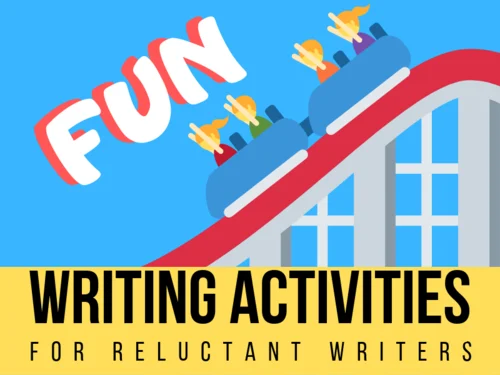
7 FUN WRITING ACTIVITIES FOR THE RELUCTANT WRITER

No doubt about it – writing isn't easy. It is no wonder that many of our students could be described as 'reluctant writers' at best. It has been estimated by the National Association of Educational Progress that only about 27% of 8th and 12th Grade students are able to write proficiently.
As educators, we know that regular practice would go a long way to helping our students correct this underachievement and sometimes writing prompts just aren't enough to light the fire.
But, how do we get students, who have long since been turned off writing, to put pen to paper and log in the requisite time to develop their writing chops?
The answer is to make writing fun! In this article, we will take a look at some ways we can inject a little enjoyment back into the writing game.
1. Poetry Scavenger Hunt
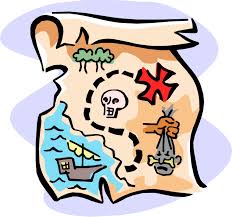
The Purpose: This activity encourages students to see the poetry in the everyday language around them, while helpfully reinforcing their understanding of some of the conventions of the genre.
The Process: Encourage students to 'scavenge' their school, home, and outside community for snippets of language they can compile into a piece of poetry or a poetic collage. They may copy down or photograph words, phrases, and sentences from signs, magazines, leaflets or even snippets of conversations they overhear while out and about.
Examples of language they collect may range from the Keep Out sign on private property to the destination on the front of a local bus.
Once students have gathered their language together, they can work to build a poem out of the scraps, usually choosing a central theme to give the piece cohesion. They can even include corresponding artwork to enhance the visual appeal of their work too, if they wish.
The Prize: If poetry serves one purpose, it is to encourage us to look at the world anew with the fresh eyes of a young child. This activity challenges our students to read new meaning into familiar things and to put their own spin on the language they encounter in the world around them, all while reinforcing the student's grasp on poetic conventions.
2. Story Chains
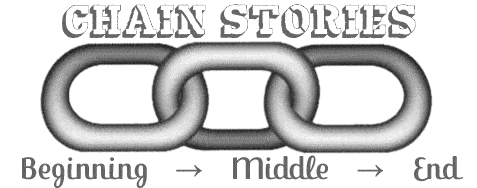
The Purpose: Writing is often thought of as a solitary pursuit, and for this reason alone it can be seen as a particularly unattractive activity by many of our more gregarious students. This fun activity not only exercises students' understanding of writing structures but engages them in some fun, creative collaboration too.
The Process: Each student starts with a blank piece of paper and pen. The teacher writes a story prompt on the whiteboard. You'll find some great narrative writing prompts here. Each student spends two minutes, for example, using the writing prompt to kick start their writing.
When they have completed this part of the task, they will then pass their piece of paper to the student next to them. Students then continue the story from where the previous student left off for a given number of words or paragraphs or length of time.
If organized correctly, you can ensure students receive their own initial story back at the end for the writing of the story's conclusion.
The Prize: This fun writing activity can be used effectively to reinforce student understanding of narrative writing structures, but it can also be fun to try with other writing genres too.
Working collaboratively can really motivate students to engage with the task as no one wants to be the 'weak link' in the finished piece. But, more than that, this activity encourages students to see writing as a communicative and creative task where there needn't be a 'right' answer. This encourages students to be more willing to take on creative risks in their work.
DOWNLOAD OUR 52 DIGITAL WRITING JOURNAL TASKS

Our FUN TEN MINUTE DAILY WRITING TASKS will teach your students the fundamentals of creative writing across all text types. These 52 excellent INDEPENDENT TASKS are perfect for DISTANCE LEARNING.
These EDITABLE Journals are purpose-built for DIGITAL DEVICES on platforms such as Google Classroom, SeeSaw and Office 365. Alternately you can print them out and use them as a traditional writing activity.
3. Acrostic Associations
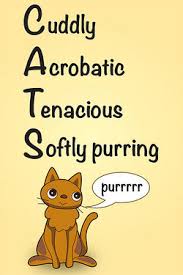
The Purpose: This is another great way to get students to try their hand at writing poetry – a genre that many students find the most daunting of all.
The Process: Acrostics are simple poems whereby each letter of a word or phrase begins a new line in the poem. Younger students can start off with something very simple, like their own name or their favorite pet and write this vertically down the page.
Older students can take a word or phrase related to a topic they have been working on, or that they have a special interest, in and write this down on the page before beginning to write.
The Prize: This activity has much in common with the old psychiatrist's technique of word association. Students should be encouraged to riff on ideas and themes generated by the focus word or phrase. They needn't worry about rhyme and meter and such here, but the preset letter for each line will give them some structure to their meanderings and require them to impose some discipline on their wordsmithery; albeit in a fun, and loose manner.
4. The What If Challenge

The Purpose: This challenge helps encourage students to see the link between the posing of interesting hypothetical questions and the creation of an entertaining piece of writing.
The Process: To begin this exercise, have the students come up with a single What If question which they can then write down on a piece of paper. The more off-the-wall the better!
For example, 'What if everyone in the world knew what you were thinking?' or 'What if your pet dog could talk?' Students fold up their questions and drop them into a hat. Each student picks one out of the hat, before writing on that question for a suitable set amount of time.
The Prize: Students are most likely to face the terror of the dreaded Writer's Block when they are faced with open-ended creative writing tasks.
This activity encourages the students to see the usefulness of posing hypothetical What If questions, even random off-the-wall ones, for kick-starting their writing motors.
Though students begin by answering the questions set for them by others, encourage them to see how they can set these types of questions for themselves too the next time they are suffering from a stalled writing engine.
5. The Most Disgusting Sandwich in the World

The Purpose: Up until now, we have looked at activities that encourage our students to have fun with genres such as fiction and poetry. These genres being imaginative in nature, more easily lend themselves to being enjoyable than some of the nonfiction genres. In this activity, we endeavor to bring that same level of enjoyment to instruction writing, while also cleverly reinforcing the criteria of this genre.
The Process: Undoubtedly, when teaching instruction writing, you will at some point cover the specific criteria of the genre with your students.
These will include things like the use of a title, numbered or bulleted points, time connectives, imperatives, diagrams with captions etc. You will then want the students to produce their own piece of instruction writing or procedural text to display their understanding of how the genre works.
But, why not try a fun topic such as How to Make the Most Disgusting Sandwich in the World rather than more obvious (and drier!) topics such as How to Tie Your Shoelaces or How to Make a Paper Airplane when choosing a topic for your students to practice their instruction writing chops?
The Prize: As mentioned, with nonfiction genres, in particular, there is a tendency to suggest more banal topics for our students to work on while internalizing the genre's criteria. Enjoyment and acquiring practical writing skills need not be mutually exclusive.
Our students can just as easily, if not more easily, absorb and internalize the necessary writing conventions while engaged in writing about whimsical and even nonsensical topics.
if your sandwich is entering the realm of horror, be sure to check our complete guide to writing a scary story here as well.
6. Diary Entry of a Future Self

The Purpose: This activity gives students the chance to practice personal writing within the conventions of diary/journal writing. It also challenges them to consider what their world will be like in the future, perhaps stepping a foot into the realm of science fiction.
The Process: Straightforwardly, after working through some examples of diary or journal writing, and reviewing the various criteria of the genre, challenge the students to write an entry at a given milestone in the future.
This may be when they leave school, begin work, go to university, get married, have kids, retire etc. You may even wish to get the students to write an entry for a series of future milestones as part of a longer project.
The Prize: Students will get a chance here to exercise their understanding of this type of writing, but, more than that, they will also get an opportunity to exercise their imaginative muscles too. They will get to consider what shape their future world will take in this engaging thought experiment that will afford opportunities for them to improve their writing too.
CLICK TO DOWNLOAD THESE TWO FREE FUN WRITING RESOURCES
7. Comic Strip Script
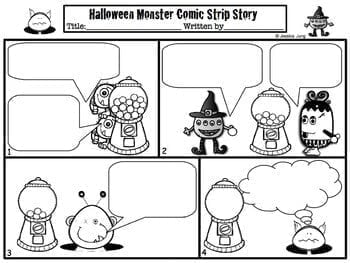
The Purpose: Give your students the chance to improve their dialogue writing skills, and to work on their understanding of character development, in this fun activity which combines writing with the use of a series of visual elements.
The Process: There are two ways to do this activity. The first requires you to source, or create, a comic strip minus the dialogue the characters are speaking. This may be as straightforward as using whiteout to erase the words in speech bubbles and making copies for your students to complete.
Alternatively, provide the students with photographs/pictures and strips of cards for them to form their own action sequences. When students have their 'mute' strips they can then begin to write the dialogue/script to link the panels together.
The Prize: When it comes to writing, comic strips are probably one of the easier sells to reluctant students! This activity also gives students the opportunity to write for speech. This will stand to them later when they come to produce sections of dialogue in their narrative writing, or when producing play or film scripts.
They will also develop their visual literacy skills, as they scan the pictures for clues of tone and context before they begin their writing.
Keep It Fun
Just as we should encourage our students to read for fun, as well as for wider educational benefits, we should work to instil similar attitudes towards writing too. To do this means we must work to avoid always framing writing in the context of a chore; that bitter pill that must be swallowed for the good of our health.
There is no getting away from the fact that writing can at times be laborious. It is time-consuming and, for the vast majority of us, difficult at the best of times. There is a certain, inescapable amount of work involved in becoming a competent writer.
That said, as we have seen in the activities above, with a little creative thought we can inject fun into even the most practical of writing activities. All that is required is a dash of imagination and a sprinkling of effort.
MORE FUN WRITING ACTIVITIES FOR YOU
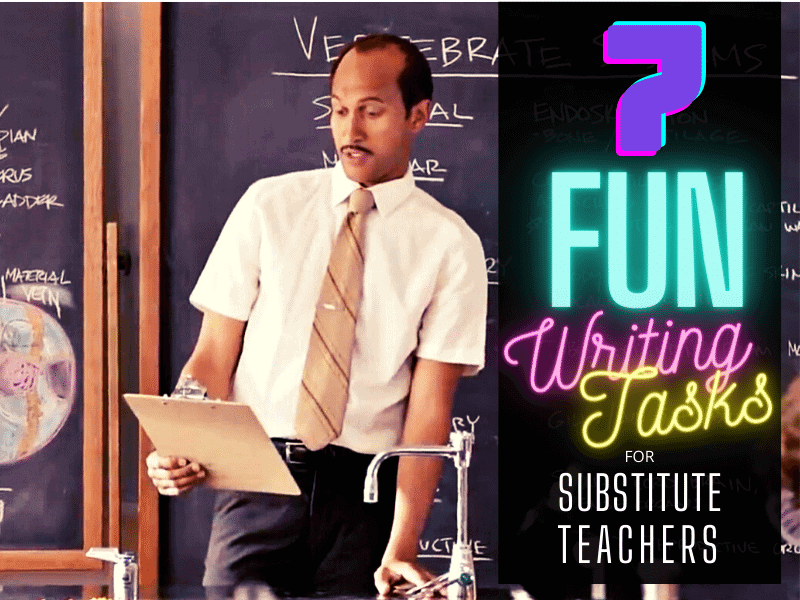
7 Fun Writing Tasks for Substitute Teachers
Look no further for fun and engaging writing ideas that will make you the coolest substitute teacher in town.


5 Fun Seasonal Writing Activities for students and teachers
Seasonal writing activities for teachers and students. Christmas Writing tasks, Halloween Writing Tasks, Back to School Writing, Spring Writing Tasks, Winter Writing tasks, and more.


The Writing Process
The Writing Process Explained Understanding the writing process provides a student with a clear step-by-step procedure that they can follow. It means they can replicate the process no matter what type of nonfiction text they are being asked to produce. In this article, we'll take a look at a simple and powerful 5-part structure that…
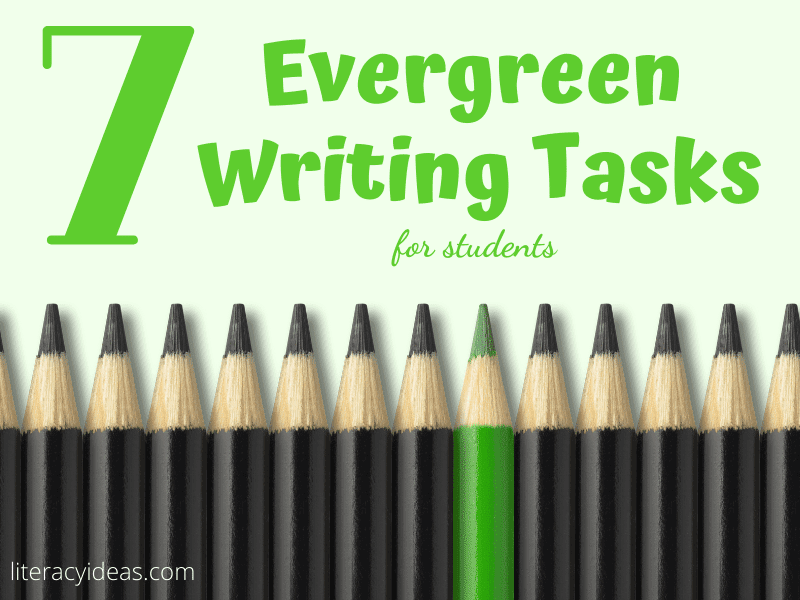
7 Evergreen Writing Activities for Students
7 Evergreen Writing Activities for Students The surest fire way a student can improve their writing is by simply writing more. We can teach our students the various criteria for each writing genre, but without extensive practice putting pen to paper technical knowledge isn't worth the paper…ahem…it's printed on. Sure, we can initiate them into…
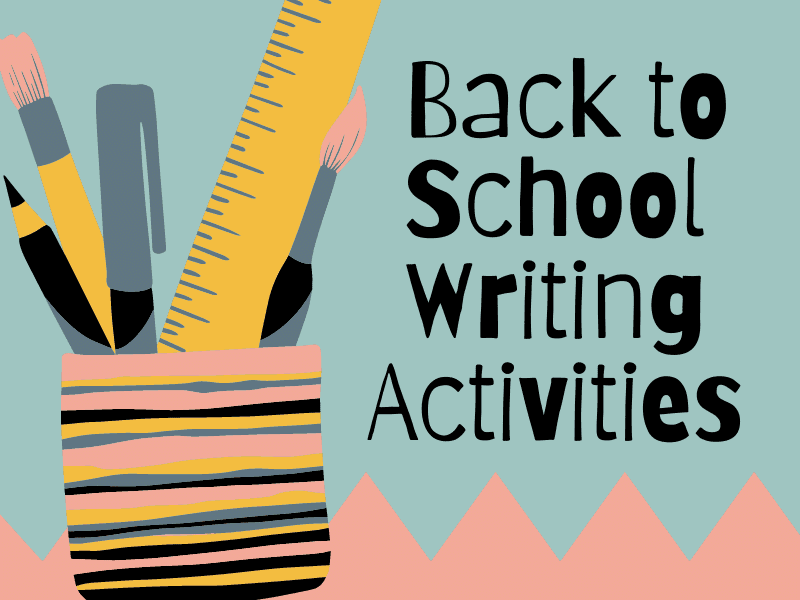
9 Fun First Day at School Writing Activities
The smell of freshly painted halls, the excited chatter of returning students bursting with 2 months' worth of gossip to share – it must be the first day at school once again. Rusty pens and dusty pencils are hastily pulled from the bottom of school bags where, for many, they've lain all summer. Now, you'll…
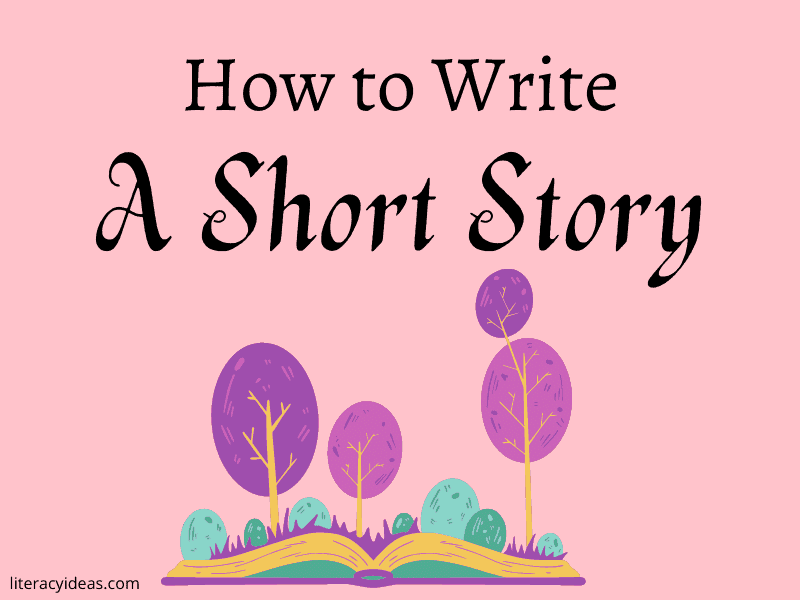
Short Story Writing for Students and Teachers
What Is a Short Story? The clue is in the title! Short stories are like novels only…well…shorter! They contain all the crucial elements of fully developed stories except on a smaller scale. In short story writing, you'll find the key story elements such as characterization, plot development, themes explored, etc, but all within a word…

Content for this page has been written by Shane Mac Donnchaidh. A former principal of an international school and university English lecturer with 15 years of teaching and administration experience. Shane's latest Book the Complete Guide to Nonfiction Writing can be found here. Editing and support for this article have been provided by the literacyideas team.
In-class Writing Activities For College Students
Source: https://literacyideas.com/7-fun-writing-activities-for-students/
Posted by: hernandezgoingwass02.blogspot.com

0 Response to "In-class Writing Activities For College Students"
Post a Comment